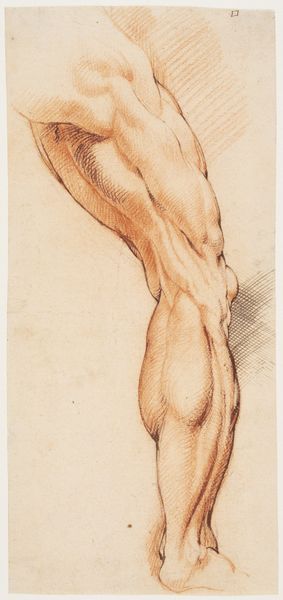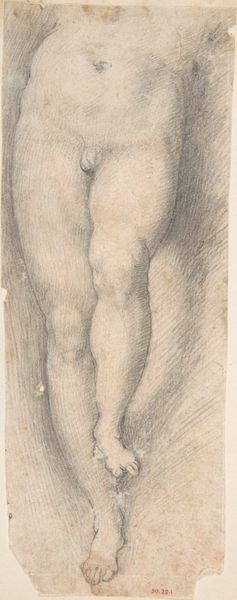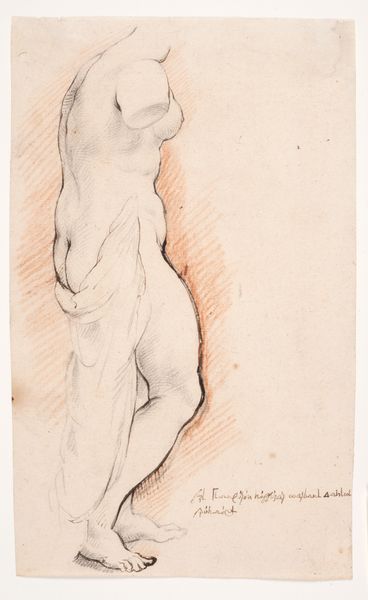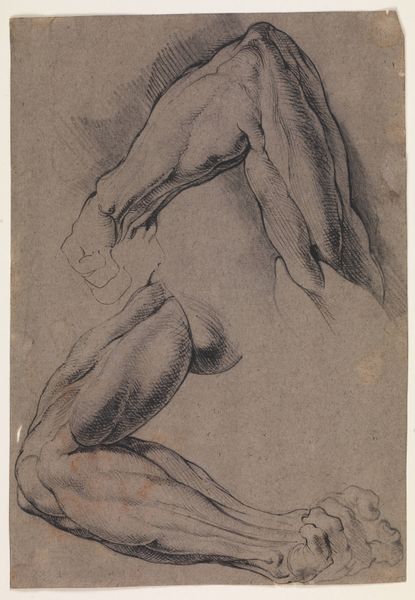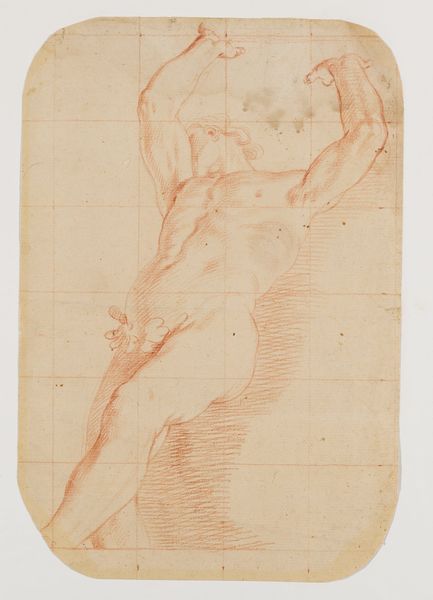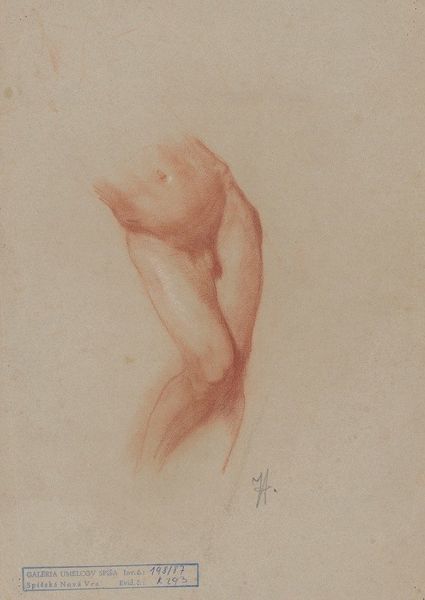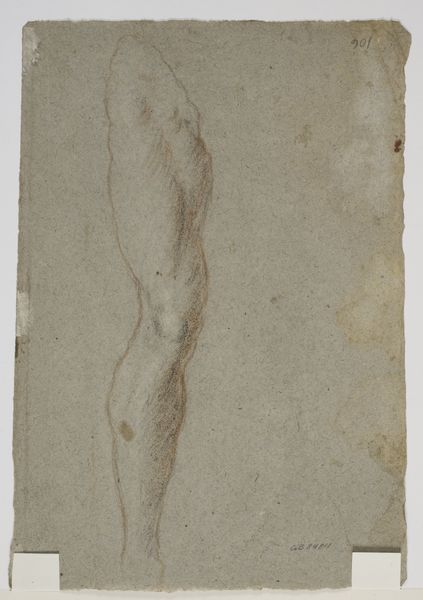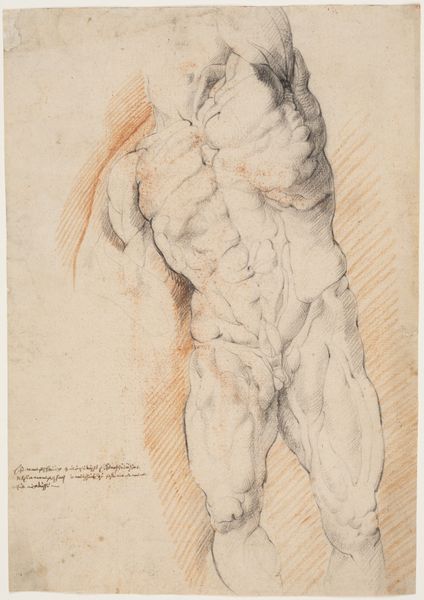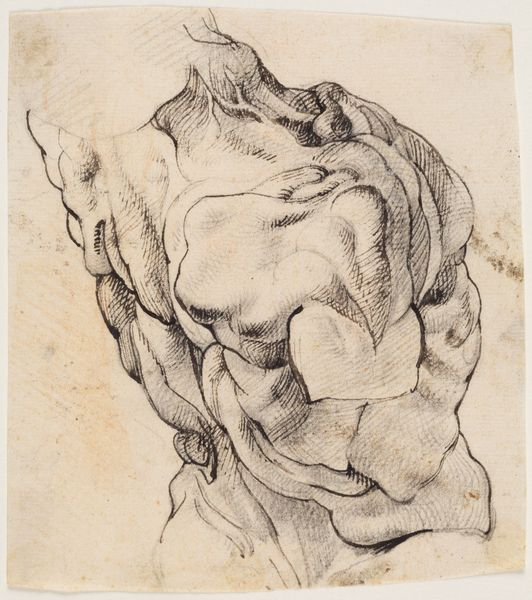
Anatomical Study (écorché). A man's flayed left leg seen from the back 1628 - 1630
0:00
0:00
drawing, dry-media
#
drawing
#
charcoal drawing
#
figuration
#
dry-media
#
history-painting
#
academic-art
Dimensions: 361 mm (height) x 156 mm (width) (bladmaal)
Curator: Immediately striking is the level of detail; the sinews of the leg rendered with such attention! Editor: Indeed. We're looking at Willem Panneels's "Anatomical Study (écorché). A man's flayed left leg seen from the back," created between 1628 and 1630. The medium is a dry charcoal drawing, currently held in the collection of the SMK in Copenhagen. The work feels rather intense, and perhaps a bit melancholic, don’t you think? Curator: It evokes a peculiar sense of detachment, doesn't it? To me, this image functions on several levels. It acts as an exposé on the politics of the body, where societal views, gender roles, and racial discourse frequently find purchase in controlling and defining bodies. Editor: I am especially drawn to the labor required to produce this drawing. Anatomical studies like this required both an artistic skill to render it, as well as access to bodies—often those of marginalized individuals whose remains ended up becoming educational tools. The paper and charcoal itself—think of their production! Curator: Absolutely. The écorché tradition raises questions regarding knowledge production and power. While the goal of these representations was a "scientific" unveiling of the body, such practices have implications, perpetuating the notion that certain bodies were merely resources for enlightenment and learning. I think, when faced with such artwork, we are obligated to question systems that benefit at the expense of disenfranchised people. Editor: That tension—between the artistry and what the piece demanded regarding materiality and access—I agree, it haunts the piece, even now. And I have to say, the play of light and shadow really makes the muscles and tendons jump out, doesn't it? I am almost recoiling physically. It also showcases a certain approach to knowledge, rooted in practical making and social circumstance. Curator: This work prompts a critical awareness of how history informs the present, shaping our understanding of race and identity. Looking closely reveals social imbalances inscribed within the material itself. Editor: It makes you ponder the narratives we inherit. Thanks for helping illuminate so much. Curator: Likewise. These explorations give me much food for thought!
Comments
No comments
Be the first to comment and join the conversation on the ultimate creative platform.
